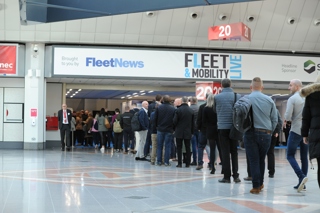For many company car drivers, the new year is unlikely to bring cheer in the form of a new car.
Short-term decisions to postpone replacement programmes at the start of the recession have, in many cases, become company policy, with the industry typically extending vehicle life from three years/60,000 miles to four years/80,000 miles.
It is not an exact science and there are a multitude of variations among fleets, but the general consensus seems to be that longer replacement periods provide the efficiencies needed in the current economic climate.
According to Graham Hine, transport manager at the University of Warwick, there are two key reasons for considering longer vehicle lifecycles.
He says: “The lifecycle for cars is driven by our essential user-only car policy. During the past two years we have adopted a policy of extending contracts from three years to four years.
“This policy was introduced for two reasons. Firstly, to reduce costs by paying a reduced monthly rental as we contract hire our vehicles.
"Secondly, we were able to defer (albeit for just 12 months) paying higher monthly contract hire rates for a comparative vehicle.
“It is noticeable that since the credit crisis contract hire rates are much higher for benchmark cars.
“Consequently we have had to review the allowances for our user-chooser company car policy.”
His comments reflect the pressures being placed on many fleet departments, which have to find savings and efficiencies in the short-term, but also try to maintain them in the long-term.
Paula Maxwell, car fleet manager for the Longhurst Group, which operates 142 cars and six vans spread across the East Midlands, says: “We currently have a replacement cycle of four years.
“I did an analysis working out the costs if we decreased the cycle to three years through our contract hire agreement, which includes maintenance, but it worked out more expensive for us.
“A four-year cycle works well for our company and we don’t get any complaints from our drivers.”
According to John Kelly, fleet services, key solutions director at GE Capital, the majority of fleets now operate vehicles over this longer four-year cycle.
He says: “During the recession, a large proportion of fleets extended their replacement cycles beyond the traditional industry standard of three years and 60,000 miles because there was a strong financial imperative to cut costs in the short term, buy time in order to retrench in the medium term, and then re-examine fleet policies in detail before making a decision on how to move forwards in the longer term.
“Currently, 73% of our fleet is operating on a replacement cycle of between 42 and 48 months, a significantly higher proportion than the pre-recession three-year standard.”
However, although organisations such as the Longhurst Group and University of Warwick have successfully managed longer replacement cycles, fleets recognise they face a delicate balancing act to create a successful policy.


















Login to comment
Comments
No comments have been made yet.